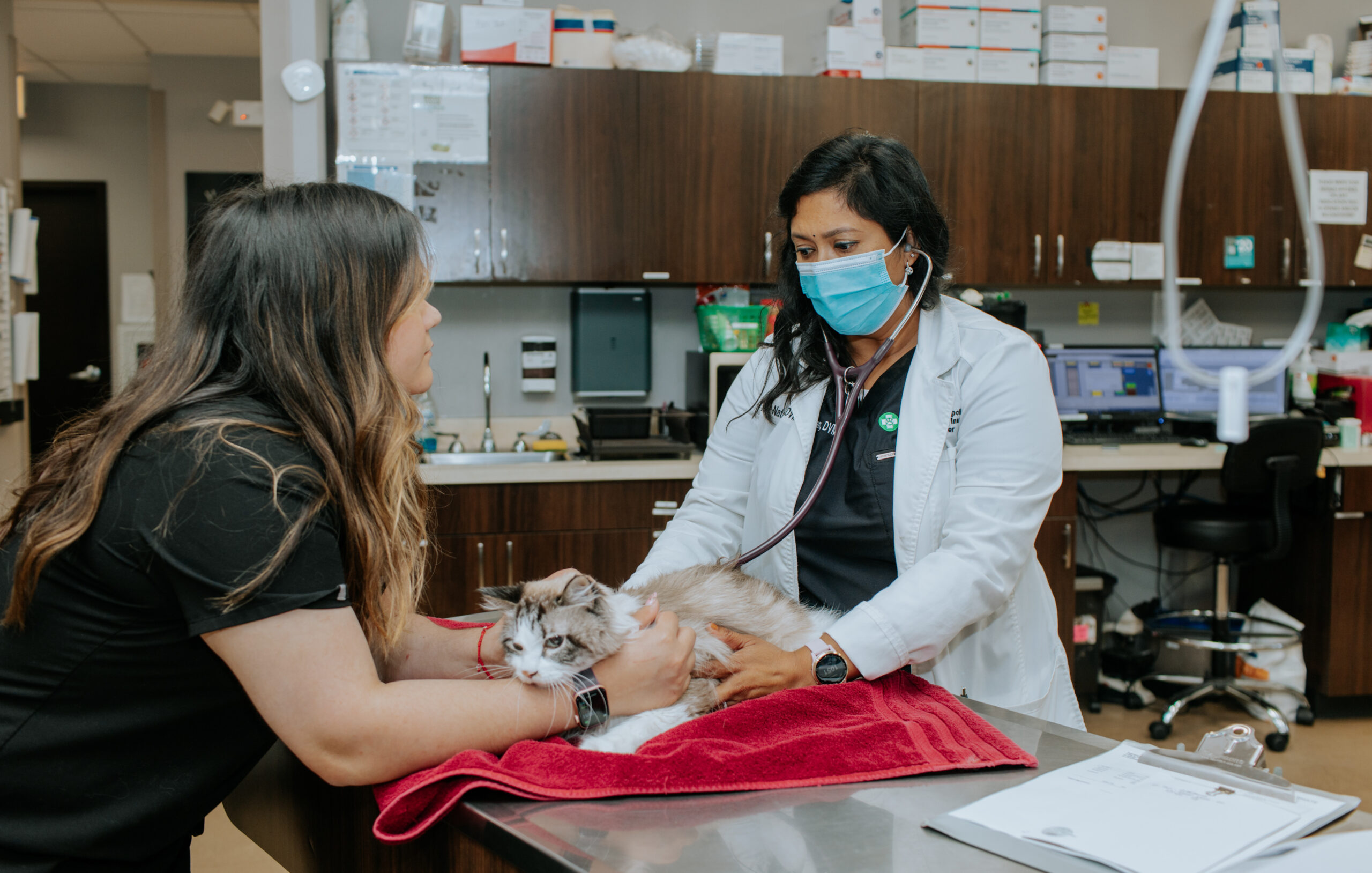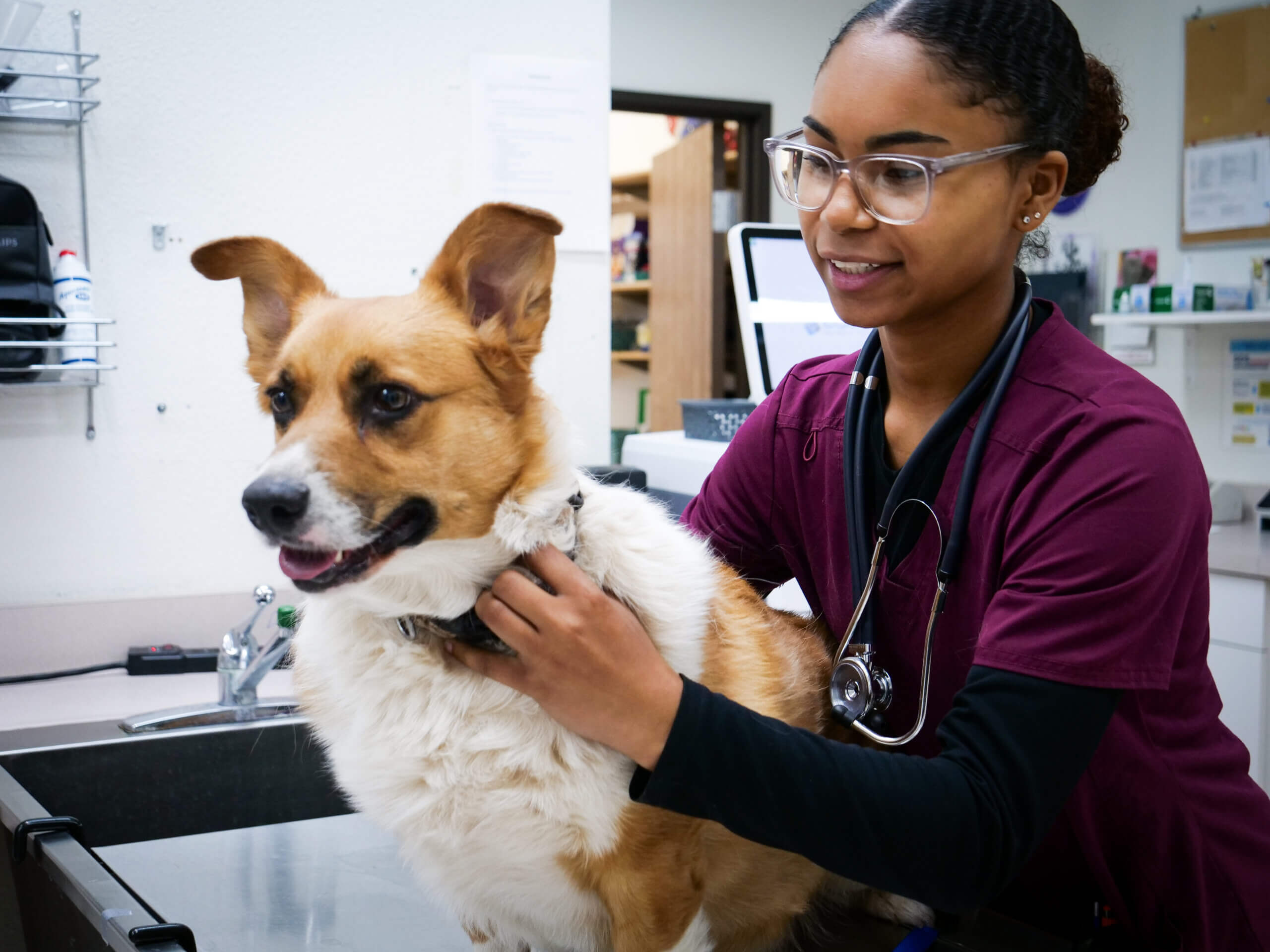Guide to Handling Accidents Quickly With Help From an emergency vet near me
Wiki Article
Why Pet Rehab Is Essential: the Advantages of Veterinarian Providers for Your Pet dog's Recovery
Animal rehab is a vital component of healing for family pets dealing with injuries or impairments. Veterinary solutions give essential support with tailored rehabilitation strategies that address individual requirements. These strategies typically include discomfort monitoring, physical therapy, and dietary advice. Understanding the various facets of pet rehab can brighten its relevance in boosting healing outcomes. What specific benefits do these solutions supply, and exactly how can they transform an animal's healing journey?Recognizing Animal Rehabilitation
Pet rehabilitation encompasses a variety of healing methods aimed at recovering the health and wellness and functionality of hurt or handicapped animals. This field integrates different strategies, consisting of physical therapy, hydrotherapy, and job-related therapy, tailored to satisfy the particular demands of each pet. Rehab experts examine an animal's condition, developing individualized treatment strategies that may entail workouts to strengthen muscle mass, improve mobility, and improve general health. The process not only concentrates on physical recuperation yet additionally addresses psychological and behavior aspects. Animals typically experience anxiety and anxiety complying with an injury, making psychological health and wellness factors to consider necessary in rehab. By developing an encouraging environment, specialists can assist animals reclaim their confidence and adapt to their brand-new scenarios. With routine sessions, pets can experience significant enhancements, inevitably causing a much better lifestyle. On the whole, recognizing animal rehabilitation highlights its significance in promoting healing and enhancing the bond between family pets and their proprietors.
The Role of Pain Monitoring in Recuperation
Just how necessary works discomfort management in the healing of damaged pets? It plays an essential role in facilitating healing and enhancing the overall health of pet dogs. Correct pain monitoring not only minimizes pain yet also promotes wheelchair, allowing animals to join recovery activities required for healing. When discomfort is effectively handled, animals tend to respond positively to therapy, bring about quicker recovery outcomes.Veterinarians use numerous techniques to examine and resolve pain, consisting of drugs, acupuncture, and alternative therapies. By tailoring discomfort administration methods to the specific demands of each pet, vets can guarantee that animals remain tranquil and participating throughout their recovery trip. Additionally, lessening discomfort helps in reducing tension, which can hinder recovery and lengthen healing times. To summarize, efficient discomfort administration is crucial for enhancing the recuperation process and boosting the high quality of life for hurt pets.Physical Therapy Strategies for Family Pets
Countless physical treatment strategies are readily available to assist in the recovery of animals recuperating from injuries or surgical treatments (canine tplo surgery). These strategies can enhance mobility, soothe discomfort, and advertise recovery. Restorative workouts, for instance, assistance reinforce muscles and enhance joint function, allowing pet dogs to restore their physical abilities progressively. Hands-on treatment, that includes massage and mobilization, can minimize tension and improve blood circulation, adding to a quicker recovery.Other techniques such as passive series of movement exercises encourage joint flexibility and reduce tightness. In addition, electrical excitement treatment may be utilized to promote nerves and muscle mass, promoting healing and pain relief.Veterinary experts usually tailor these techniques to every family pet's specific needs, making sure a comprehensive recovery plan. By implementing these physical treatment approaches, pet dogs can experience improved high quality of life and an extra successful healing from their ailments. The combination of these methods into rehabilitation programs is necessary for ideal recuperation resultsBenefits of Hydrotherapy for Rehabilitation
Hydrotherapy provides considerable advantages in pet rehabilitation, particularly in improving mobility. This water-based treatment promotes discomfort relief while giving comfort to hurt or recouping animals. Furthermore, it assists in strength-building workouts that add to general physical recuperation.Boosted Movement Improvement
As pets recover from injuries or surgeries, enhanced flexibility frequently becomes a main objective of their recovery. Hydrotherapy acts as a beneficial device in attaining this goal. Via water-based exercises, animals can take part in low-impact motions that assist in joint movement and reinforce muscular tissues without the tension of weight-bearing activities. The buoyancy of water sustains their bodies, permitting raised series of movement and movement improvement. In addition, hydrotherapy motivates far better balance and coordination, which are crucial for restoring normal motion patterns. Normal sessions can lead to considerable progress in a pet's physical capabilities, eventually enhancing their lifestyle. This method not just help in healing but additionally advertises an extra active and satisfying lifestyle post-rehabilitation.Discomfort Relief and Comfort

Alleviation from pain is an important aspect of animal rehabilitation, and hydrotherapy significantly adds to this process. By making use of water's buoyancy, hydrotherapy lowers joint anxiety and relieves discomfort throughout activity. This restorative method gives a calming atmosphere where animals can engage in gentle workouts without the complete weight of their bodies influencing their recovery. The warm water boosts blood circulation, advertising recovery while likewise urging relaxation. Furthermore, hydrotherapy sessions can be tailored to meet the specific needs of the pet, making certain optimal comfort. As animals experience decreased pain and enhanced convenience degrees, their total willingness to join rehab activities typically boosts, resulting in a more reliable healing trip. Subsequently, hydrotherapy functions as an essential tool in improving discomfort relief and comfort during rehabilitation.
Stamina Structure Workouts
Strength-building exercises play a vital role in the recovery procedure, with hydrotherapy offering special advantages. This kind of treatment uses water resistance to improve check this muscular tissue toughness without putting extreme stress on the joints. The buoyancy of water sustains the family pet's weight, enabling safer activity and boosted array of activity. Additionally, hydrotherapy can enhance cardiovascular health and advertise total health and fitness, assisting in faster recovery from injuries or surgeries. The controlled environment also minimizes the threat of reinjury, making it an ideal option for pet dogs requiring recovery. Regular hydrotherapy sessions can result in noticeable renovations in mobility, toughness, and endurance, inevitably boosting the family pet's quality of life and capability to go back to typical activities.Value of Personalized Rehabilitation Strategies
Customized rehab strategies are essential for addressing the special needs of each pet, guaranteeing individualized therapy strategies. These plans enable effective progress monitoring and needed adjustments, fostering perfect healing outcomes. Furthermore, a holistic strategy can enhance the total health of the pet, promoting a much more complete rehab experience.Individualized Therapy Approaches
While many recovery programs take on a one-size-fits-all technique, the unique needs of each pet necessitate personalized therapy plans for suitable recovery. Custom-made rehab strategies think about numerous elements, consisting of the animal's types, age, case history, and particular injuries or conditions. By customizing interventions, vets can attend to each animal's special difficulties, optimizing the effectiveness of the rehab process. Embellished strategies might include various methods such as physical treatment, hydrotherapy, and restorative exercises, ensuring that the treatment aligns with the animal's abilities and progression. Additionally, customized techniques promote a more powerful bond between the pet and the caregiver, advertising a more interesting and encouraging recovery atmosphere. Eventually, individualized therapy is necessary for achieving finest feasible results in animal recovery.read this post here
Development Monitoring and Adjustments

Holistic Healing Strategies
Holistic recuperation techniques are vital for effective animal rehab, as they emphasize the relevance of customized treatment plans customized per animal's home specific demands. This strategy takes into consideration the physical, psychological, and ecological elements influencing healing. Custom-made rehabilitation strategies might consist of a mix of physical therapy, nutritional therapy, and behavioral modifications. By attending to these diverse facets, veterinarians can enhance the general health of the pet and advertise a much faster recovery. Additionally, such customized techniques assist in a much deeper understanding of the family pet's special difficulties, leading to more efficient treatments. Ultimately, alternative recovery methods not just improve physical wellness however additionally add to the animal's psychological and psychological security, making certain a thorough recovery experience.The Effect of Nutrition on Recovery
Nourishment plays a crucial duty in the recuperation procedure for restoring pets, commonly figuring out the speed and performance of recovery. A well-balanced diet gives the needed nutrients that support cells repair service, enhance the immune system, and improve overall vigor. Healthy protein is especially essential, as it helps in muscle mass restoring and healing from injuries. Vital fats, vitamins, and minerals likewise add to lowering inflammation and promoting ideal mobile function.Veterinarians regularly emphasize the significance of customized nourishment strategies, considering each pet's details demands, age, and wellness condition. Appropriate hydration is equally important, as fluids help with nutrition absorption and assistance in detoxification. By ensuring that pets receive ideal nourishment, caretakers can considerably improve their opportunities of an effective recuperation, leading to far better long-lasting health end results. Eventually, nutrition functions as a foundational component in the rehabilitation journey, sustaining animals in restoring stamina and durability post-injury or health problem.Success Stories: Pets That Grew After Rehab
Effective rehab tales are plentiful, showcasing the durability of pets that have actually gotten over considerable obstacles. Take, for example, Bella, a golden retriever that endured severe injuries from an automobile mishap. With dedicated vet care and a comprehensive rehab program, she regained her mobility and returned to her lively self, much to her proprietor's joy. Similarly, Max, a senior cat identified with arthritis, experienced exceptional improvement with a combination of physical therapy and discomfort administration. His newfound dexterity allowed him to enjoy his favored sunbathing spots once more. Another inspiring situation is that of Coco, a rescued greyhound that conquered anxiousness with therapy and socializing strategies, allowing her to thrive in her brand-new home. These success tales exemplify the transformative power of pet rehabilitation, stressing that with the best assistance, pets can not just recoup but lead satisfying lives, improving the bonds they share with their family members.Regularly Asked Questions
How much time Does the Rehab Refine Commonly Take for Pet Dogs?
The rehabilitation procedure for pets normally differs based on the injury or problem, varying from a few weeks to several months. Specific progress, treatment type, and dedication to workouts substantially influence the general duration of healing.Are There Any Kind Of Risks Related To Pet Recovery?
Pet recovery may lug risks such as exacerbation of injuries, inappropriate techniques bring about discomfort, or not enough surveillance during recuperation. These aspects can hinder progression and impact the general efficiency of the recovery procedure.
Can All Pets Gain From Recovery Providers?
Not all animals may call for rehabilitation, yet many can benefit significantly. Rehabilitation services can enhance wheelchair, reduce pain, and improve overall health, especially for those recouping from injuries, surgeries, or chronic conditions.Exactly How Can I Prepare My Family Pet for Rehabilitation Sessions?

What Indications Show My Pet Needs Rehab?
Indications showing an animal may require rehab include difficulty walking, hopping, reduced task degrees, hesitation to leap, or signs of pain. Observing these behaviors can prompt owners to seek specialist analysis and treatment for their pets.Report this wiki page